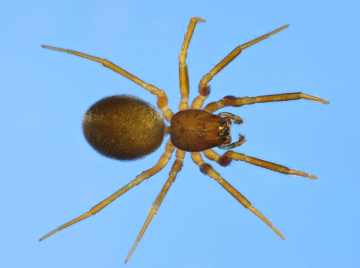Summary for Agyneta fuscipalpa (Araneae)
previous species | next species
National Distribution
Terms of Use. Double-click on map to go to region

Explore Regional Distribution
Please log on and add a note on this species
About this species
Recorded altitude range5m to 5m
Species text
DistributionThe species is widespread in northern Europe but is rarely found (Heimer & Nentwig 1991). The only British records of the spider are from a single site at RAF Mildenhall in West Suffolk, reported in more detail in Lee & Merrett (2001).
Habitat and ecology
Heimer & Nentwig (1991) give the habitat as damp places and occasionally on tree trunks but the British specimens were taken from calcareous grass heath in Breckland. Recent records from Germany (Blick 1999) and Belgium (Vanuytven 1992) suggest that open, sandy habitats are the more usual habitat and confusion with M. rurestris may have led to some misunderstandings over habitat requirements in the past. Males have been found at RAF Mildenhall from June to August and in October. The only record of a female at the site is from June.
Status
Known from a single site where several specimens were found in 1998 and 1999. Known area of occupancy is less than 1km2. The species may warrant higher status than currently accorded here.
Threats
Possibly lack of grazing resulting in loss of open structure of grassland or stochastic events including grass fires, fuel spillages could be relevant. Also military activities could threaten habitat.
Management and conservation
At its one known site rabbit grazing probably maintains the open nature of the grassland but this should be regularly monitored.
Text based on Dawson, I.K., Harvey, P.R., Merrett, P. & Russell-Smith, A.R. (in prep.). References
Adult Season
Habitats
background methodology
Recorded management for locations with Agyneta fuscipalpa
Recorded substrate and hydrology for locations with Agyneta fuscipalpa
Images
please log on and upload a new image for this speciesSee also A-Z Species Index - A-Z Picture Index - previous species | next species
